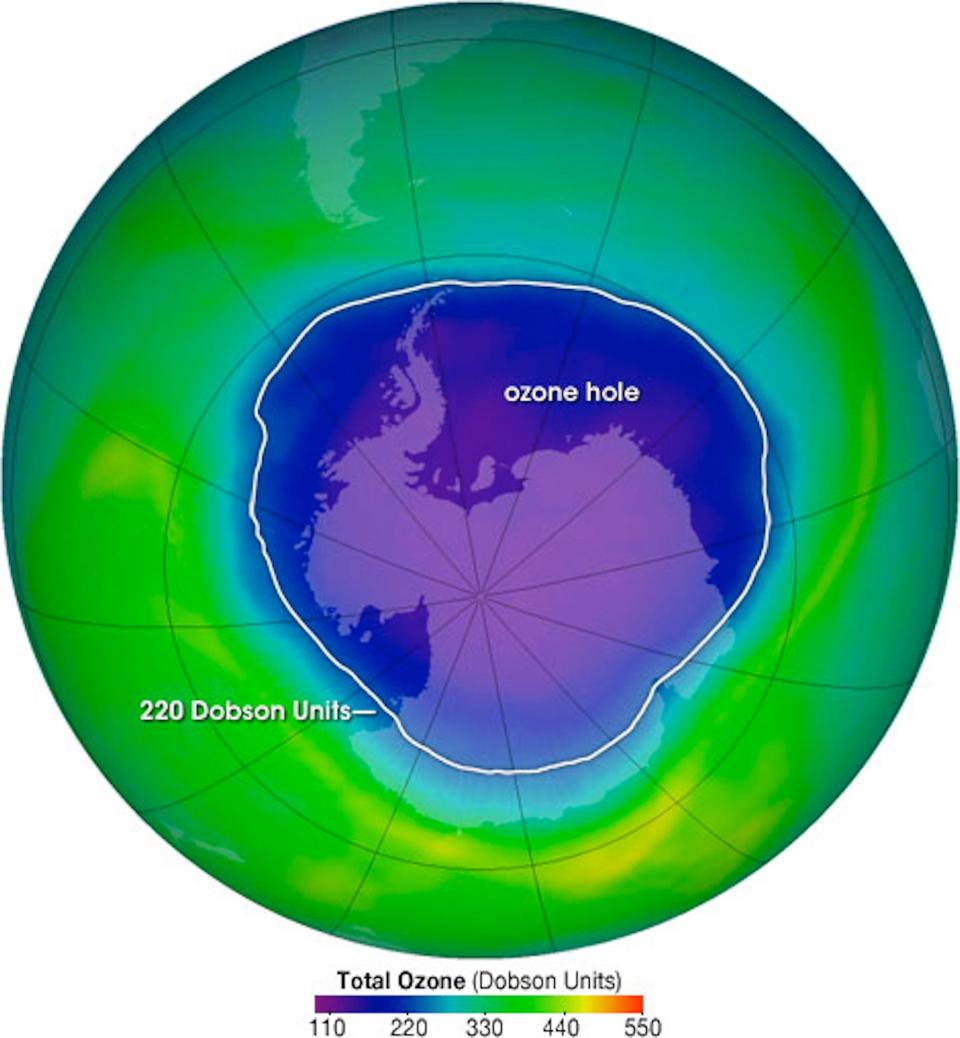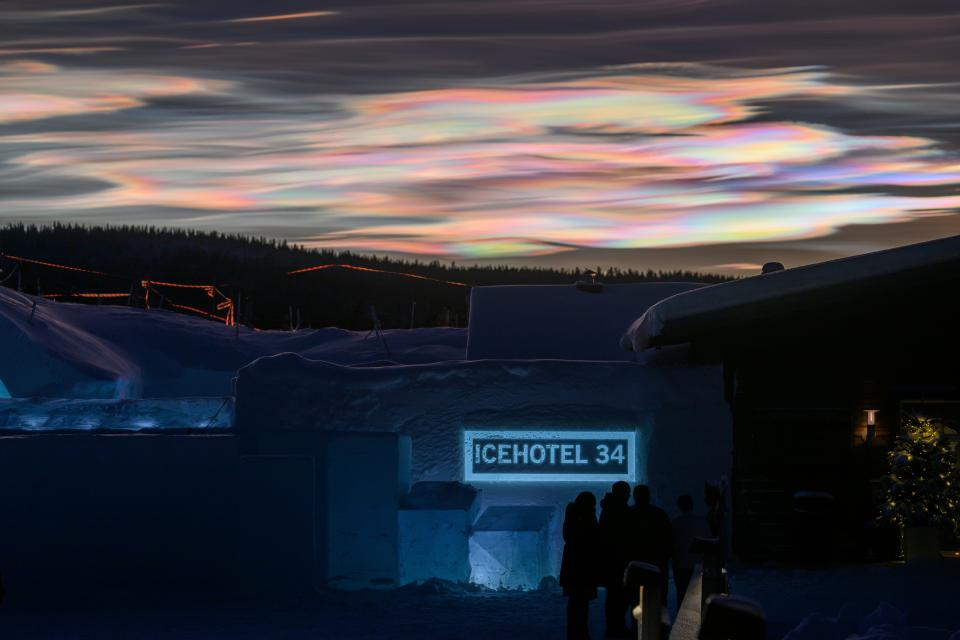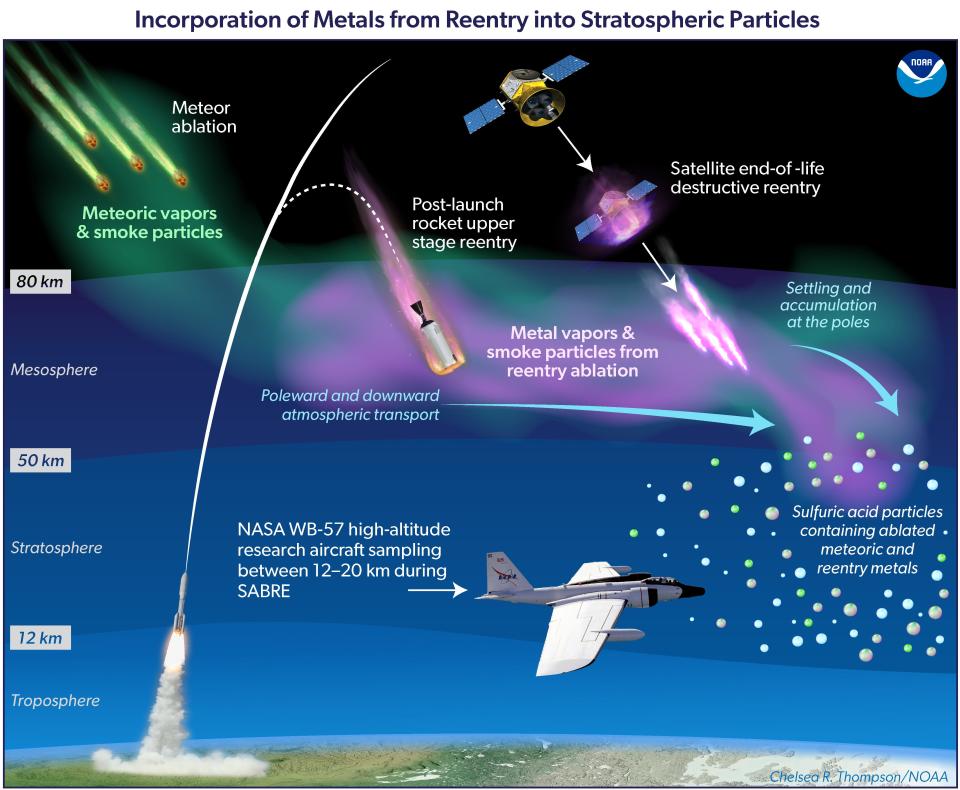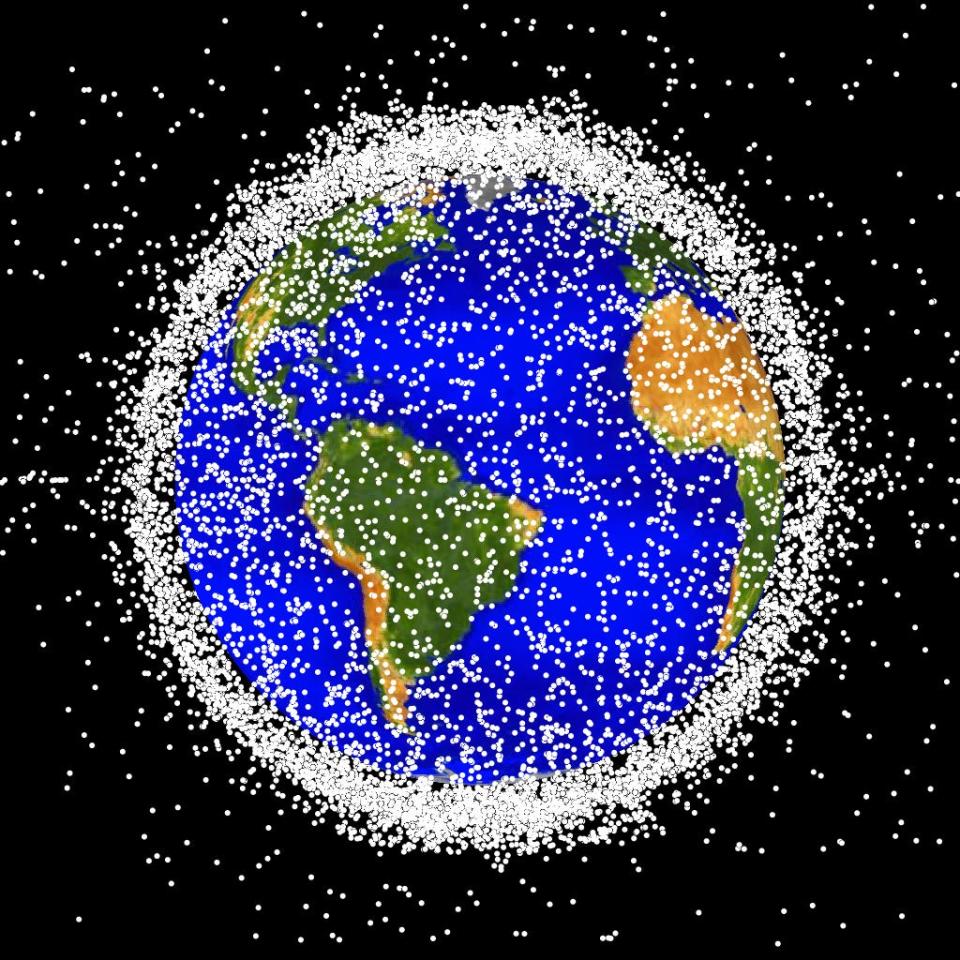-
Spacecraft that burn up in the atmosphere leave behind metal particles.
-
Scientists are rushing to understand whether this affects the climate.
-
One risk is that these particles could create rainbow-colored clouds that damage the ozone layer.
Satellites and spacecraft that burn up in our atmosphere leave metal particles in the stratosphere – and scientists fear this could harm our planet.
About 10% of the particles floating in the stratosphere now come from the aerospace industry, and we don’t know if this could have any impact on the climate.
One risk is that these new particles could create polar stratospheric clouds, which are spectacular rainbow-colored clouds that can damage the ozone layer, experts told Business Insider.
“This is a good demonstration of how important it is to do basic research on the stratosphere,” Daniel Murphy, a research scientist at the National Oceanic and Atmospheric Administration Chemical Science Lab who led a study on the particles, told BI.
“There’s a whole phenomenon happening here that we didn’t expect and we don’t fully understand the implications,” he said.
Stratospheric particles can form the ozone layer
Remember the ozone layer? If you were around in the 80s, that’s probably the period you associated it with.
This crucial layer of the atmosphere, located largely in the stratosphere, protects us from ultraviolet radiation from the sun. It was often in the news four decades ago when scientists raised the alarm about gaping holes growing above the poles, created by chlorofluorocarbons (CFCs) rising uncontrollably into the atmosphere.


The holes in the ozone layer don’t make the news very often these days. Thanks to the 1987 Montreal Protocol, a global agreement that set a path to phase out ozone-damaging gases, they are steadily healing.
Yet they are not gone. In September 2023, the hole over Antarctica grew to the sixth largest size ever observed before receding, likely due to particles emitted by the 2022 Hunga Tonga underwater volcanic eruption.
That’s why it’s important to keep an eye on particles in the stratosphere. These nanometer-sized specks, which naturally come from meteors impacting the planet, can dramatically change the chemistry of the stratosphere.
Clouds do not typically form in the stratosphere because it is much drier than the troposphere, where most clouds form.
By bringing in elements you wouldn’t normally see in the sky, such as metals, these particles can combine with the sulfuric acid naturally present in the stratosphere, creating a chemical reaction that can suck up passing water vapor, creating an ice crystal .
That, in turn, can set off a chain reaction that creates rainbow-colored polar stratospheric clouds.
On their own, these stunning clouds are harmless, but they can be terrifying when mixed with man-made gases. The edges of the clouds provide perfect conditions for harmful chlorines and bromides to be converted into their active, ozone-depleting form.


Metal from satellites and spacecraft evaporates into the atmosphere
Murphy and his colleagues recently conducted a study of the state of stratospheric particles over Alaska using a sensitive detector aboard NASA’s WB-57 high-altitude research aircraft.
The findings, published in the peer-reviewed journal PNAS in October 2023, revealed that about 10% of the sulfuric acid particles in the stratosphere they picked up could not be explained by natural causes.
“We weren’t really looking for spacecraft, but it was clear from the data that there were elements that couldn’t have come from the meteors,” Murphy told BI.


The particles contained “way too much aluminum, way too much lithium and way too much of a few other elements to have come from meteors,” he said.
Two elements found in the particles, niobium and hafnium, were particularly surprising, Murphy said.
These do not occur naturally, but need to be refined, the scientists said.
“The combination of aluminum and copper, plus niobium and hafnium, used in heat-resistant, high-performance alloys, pointed us to the aerospace industry,” Murphy added.


At this point, we simply don’t know what these new particles might do. But scientists are eager to find out.
“This is a new problem and we’re just beginning to understand it,” Murphy said.
They may be able to create polar stratospheric clouds. If so, this could be a major problem in the short term, Martin Chipperfield, professor of atmospheric sciences at the University of Leeds, UK, told BI.
“The timescale for the ozone hole to disappear is about 2060, based on current predictions, because chlorine levels are falling very, very slowly,” says Chipperfield, who was not involved in the study.
“So that still leaves plenty of room in the short term, if we significantly increase space debris burnout over the next few decades, because the ozone hole is going to get worse before it gets better,” he said.
These new particles could also migrate to the troposphere, where they could influence the formation of feathery cirrus clouds. Unlike other clouds, cirrus clouds trap heat in our atmosphere, which could worsen the climate crisis.
It is also possible that the particles could create a completely new phenomenon. Or they could do nothing at all.
Their composition is unique, making it unclear what to expect. Murphy said scientists will have to do experiments in the lab to test this out.
“It’s very important to understand this because the space industry is growing so quickly,” Murphy told BI.
“If there are consequences, it’s better to understand it now before it grows rather than after it has already grown significantly.”
We realize how little we know
With launch costs falling, the number of satellites orbiting the planet is only expected to increase to more than 50,000 by 2030, up from around 8,000 today. Many of these satellites are expected to have a short lifespan.
“If you multiply these numbers, a satellite will re-enter the atmosphere on average about once per hour,” Murphy said.
Murphy and his co-authors estimate that space debris could make up 50% of the particles in the stratosphere in the coming decades, making the need to understand what they do even more urgent.


Dismantling spacecraft is only part of the story, Chipperfield said.
“There are an increasing number of rocket launches for small satellites and tourism, which burn kerosene or other fuels that are released into the atmosphere. Some satellites and orbiters have fuel like iodine that can be released back into the atmosphere. And then the demise,” he says . said.
“I think the whole lifecycle of satellites is definitely one to watch, and this burnout is part of that,” Chipperfield says.
Scientists are also seriously considering geoengineering the atmosphere to protect our planet from the sun’s heat by sending billions of sulfuric acid particles into the stratosphere.
For Murphy, this all shows how little we know about how humans are affecting the stratosphere as more and more forays reach into the sky.
“That there was still surprise in our understanding of the composition of particles in the stratosphere is relevant to conversations about adding more,” Murphy says.
Read the original article on Business Insider